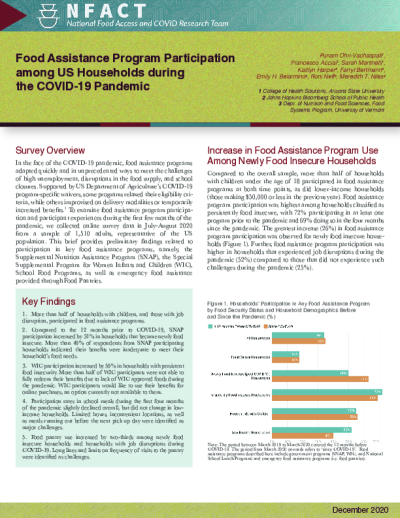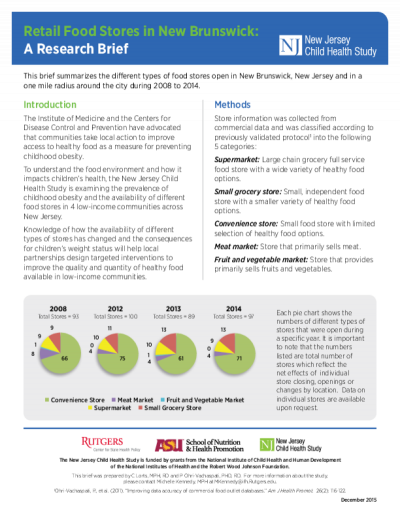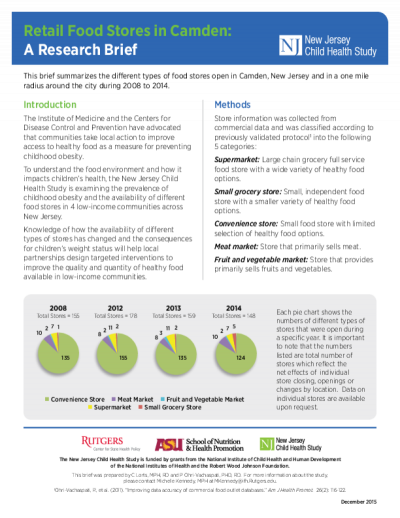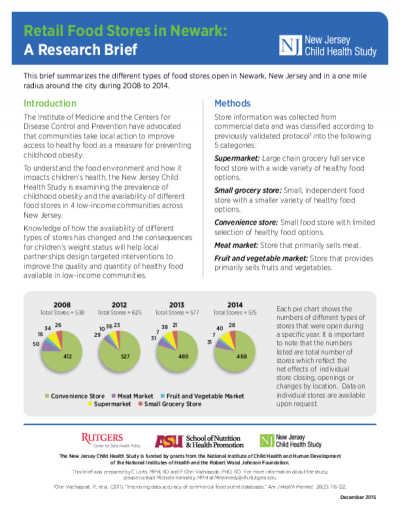
Objective
In response to recent national efforts to increase the availability of healthy food in small stores, we sought to understand the extent to which small food stores could implement the newly published Healthy Small Store Minimum Stocking Recommendations and reflect on the new US Department of Agriculture Food and Nutrition Service's final rule for stocking of staple foods for Supplemental Nutrition Assistance Program–approved retailers.
Design
We collected qualitative and quantitative data from 57 small stores in four states (Arizona, Delaware, Minnesota, and North Carolina) that accepted Supplemental Nutrition Assistance Program but not Special Supplemental Nutrition Assistance Program for Women, Infants, and Children benefits. Data from semistructured, in-depth interviews with managers/owners were transcribed, coded, and analyzed. We collected quantitative store inventory data onsite and later performed descriptive analyses.
Results
Store interviews revealed a reluctant willingness to stock healthy food and meet new recommendations. No stores met recommended fruit and vegetable stocking, although 79% carried at least one qualifying fruit and 74% carried at least one qualifying vegetable. Few stores met requirements for other food categories (ie, whole grains and low-fat dairy) with the exception of lean proteins, where stores carrying nuts or nut butter were more likely to meet the protein recommendation. Water and 100% juice were widely available and 68% met basic healthy beverage criteria.
Conclusions
In contrast to the inventory observed, most owners believed store stock met basic recommendations. Further, findings indicate that small stores are capable of stocking healthy products; however, technical and infrastructure support, as well as incentives, would facilitate shifts from staple to healthier staple foods. Retailers may need support to understand healthier product criteria and to drive consumer demand for new products.

In response to lack of access to healthy foods, many low-income communities are instituting local healthy corner store programs. Some stores also participate in the United States Department of Agriculture's Special Supplemental Nutrition Program for Women, Infants, and Children (WIC) and the Supplemental Nutrition Assistance Program (SNAP). This study used two assessment tools to compare the healthfulness of offerings at stores participating in local healthy store programs (upgraded stores), WIC, and/or SNAP to that of similar non-participating stores.
Based on store audits conducted in 315 New Jersey corner stores in 2014, we calculated healthy food availability scores using subsections of the Nutrition Environment Measures Survey for Corner Stores (NEMS-CS-Availability) and a short-form corner store audit tool (SCAT). We used multivariable regression to examine associations between program participation and scores on both instruments.
Adjusting for store and block group characteristics, stores participating in a local healthy store program had significantly higher SCAT scores than did non-participating stores (upgraded: M = 3.18, 95% CI 2.65–3.71; non-upgraded: M = 2.52, 95% CI 2.32–2.73); scores on the NEMS-CS-Availability did not differ (upgraded: M = 12.8, 95% CI 11.6–14.1; non-upgraded: M = 12.5, 95% CI 12.0–13.0). WIC-participating stores had significantly higher scores compared to non-participating stores on both tools. Stores participating in SNAP only (and not in WIC) scored significantly lower on both instruments compared to non-SNAP stores.
WIC-participating and non-SNAP corner stores had higher healthfulness scores on both assessment tools. Upgraded stores had higher healthfulness scores compared to non-upgraded stores on the SCAT.

In the face of the coronavirus (COVID-19) pandemic, food assistance programs adapted quickly and in unprecedented ways to meet the challenges of high unemployment, disruptions in the food supply, and school closures. Supported by US Department of Agriculture’s COVID-19 program-specific waivers, some programs relaxed their eligibility criteria, while others improvised on delivery modalities or temporarily increased benefits.1 To examine food assistance program participation and participant experiences during the first few months of the pandemic, we collected online survey data in July 2020 from a sample of over 1,500 U.S. households, representative of the US population. This brief summarizes participation in key food assistance programs, namely, the Supplemental Nutrition Assistance Program (SNAP), the Special Supplemental Program for Women Infants and Children (WIC), School Food Programs, as well as emergency food assistance provided through Food Pantries.

Many factors influence children’s health behaviors and health outcomes. The Social Ecological Model (SEM) groups these factors into interactive layers, creating a framework for understanding their influence and for designing interventions to achieve positive change. The layers of influence in the SEM include individual, interpersonal, organizational, community, and policy factors.


Programs such as the Healthy Corner Store Initiative have been widely adopted in recent years to increase the availability of healthy foods in small retail food stores. Valid and reliable measures are necessary to evaluate the effectiveness of these programs. The validated instruments currently available for assessments require in-person evaluations, with surveys taking up to 30 minutes per store to complete. This instrument was developed by researchers at Arizona State University to simplify the process of evaluating the effectiveness of healthy store interventions, and to enable community partners and practitioners to conduct their own evaluations of food access. The SCAT was validated against an adapted version of the Nutrition Environment Measures Survey for Corner Stores, and tested for feasibility of use over the telephone. The SCAT was found to discriminate between corner stores in the top 20% of healthfulness scores from those in the lower 80% with 89% accuracy.
In 2015 a panel of experts was convened by Healthy Eating Research, a program of the Robert Wood Johnson Foundation, to establish a set of minimum guidelines small retail food stores could reach to be classified as meeting basic or preferred stocking levels. Work is currently in progress to assess how the SCAT scores correlate with basic and preferred levels.

This brief summarizes the different types of food stores open in New Brunswick, New Jersey and in a one mile radius around the city during 2008 to 2014.

Many factors influence children’s health behaviors and health outcomes. The Social Ecological Model (SEM) groups these factors into interactive layers, creating a framework for understanding their influence and for designing interventions to achieve positive change. The layers of influence in the SEM include individual, interpersonal, organizational, community, and policy factors (see figure). The New Jersey Child Health Study (NJCHS) was designed to examine how specific layers of the SEM, particularly food and physical activity environments in schools and communities, affect obesity outcomes in children

This brief summarizes the different types of food stores open in Camden, New Jersey and in a one mile radius around the city during 2008 to 2014.

This brief summarizes the different types of food stores open in Newark, New Jersey and in a one mile radius around the city during 2008 to 2014.